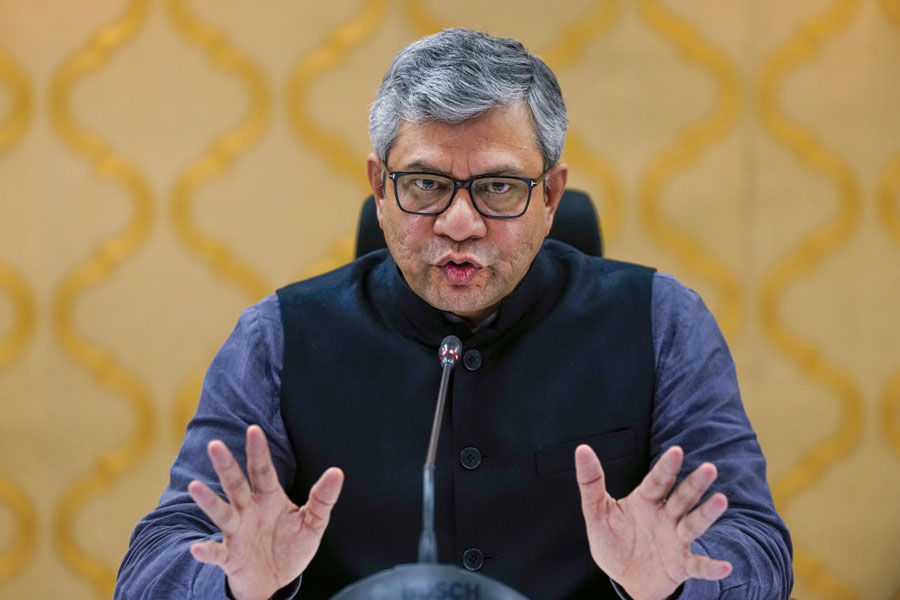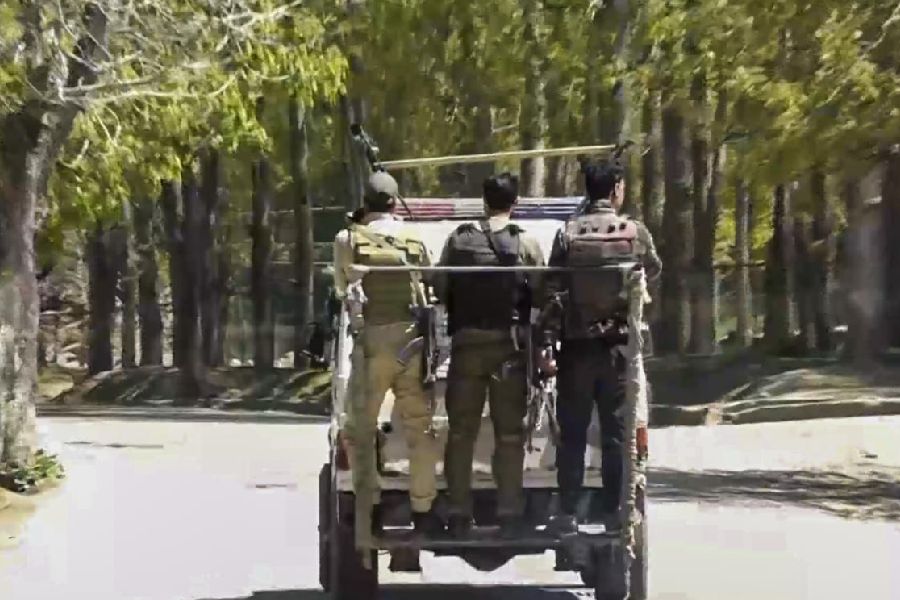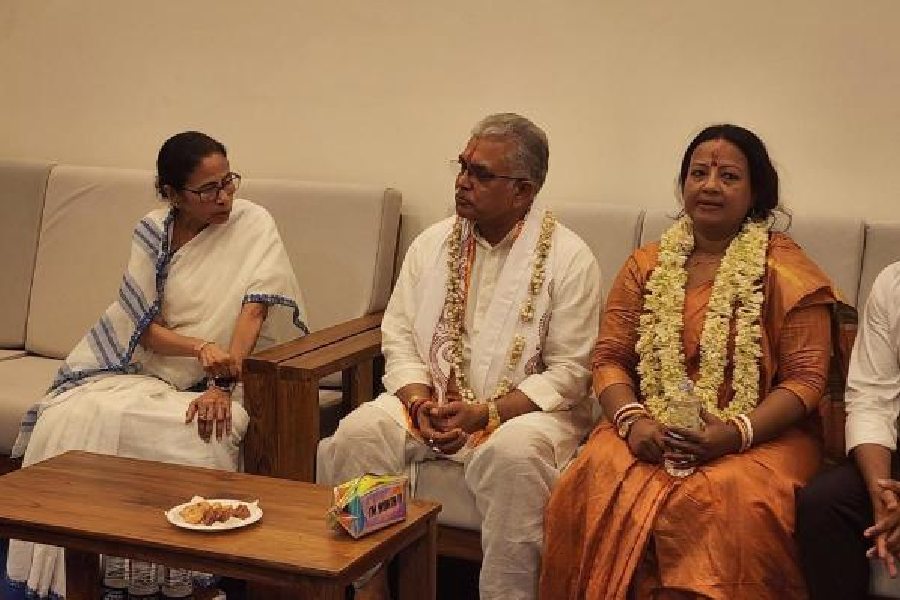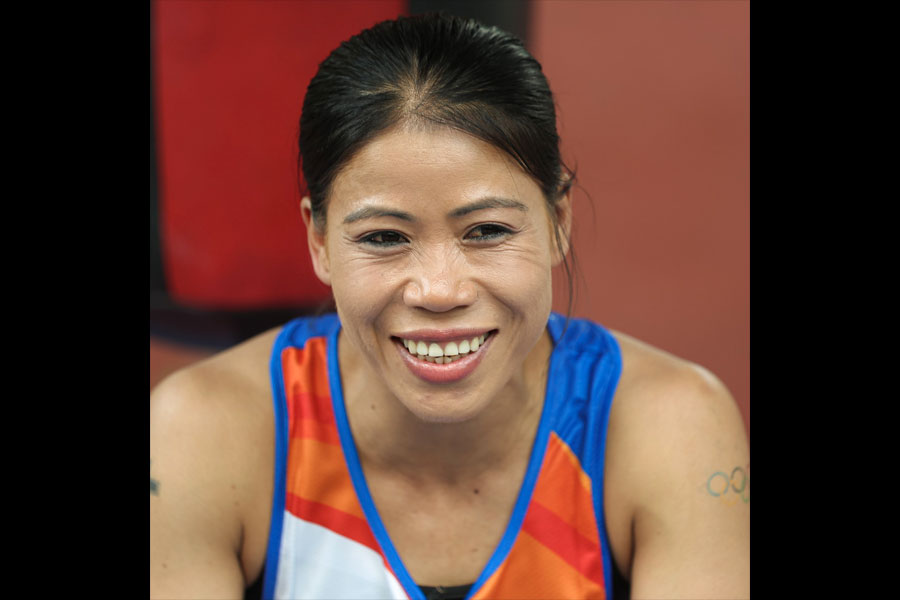
Camac Street: Three eyes stare at you - two of the predator, a cheetah, and the third of its kill, an impala. The chilling moment captured in the Okavango Delta of Botswana just seven weeks ago is among a series of photographs from the wild shown at the British Council on the eve of World Photography Day.
Anecdotes followed each frame that veteran wildlife photographer and industrialist Rajarshi Banerji shared with his audience on Saturday.
Images of tigers shot from various angles and in different moods came up on the screen as Banerji stressed the importance of patience and practice in wildlife photography.

Most people stay there for only two or three days but I decided to give myself five.
I wanted the elephants and the mountains together in the right kind of light. I cancelled all other plans and waited for the elephants at the same spot for four days. My prayer was answered on the fifth day when I finally got them at 7.30 in the morning.”
The photograph now finds pride of place in Banerji’s Ballygunge drawing room.
"It was 50 degrees Celsius at Bandhavgarh National Park. We waited and suffered sunburns as a tiger swam about, ignoring us," he recounted. Banerji didn't give up and a long wait later he got his reward. "I could capture the tiger going up a tree to chase its prey - a langur. Overshoot frames and you will see a wildlife action story evolving. See the subject within a subject. Look for frames within frames," he said.

Banerji, who drives his SUV non-stop for 16 to 36 hours to national parks across the country, has shot more than 1,50,000 wildlife images in the past 40 years.
The audience was also treated to rare shots of a tiger and tigress "kissing" at Bandhavgarh National Park, a kite stealing an Olive Ridley sea turtle's egg and leaving a trail of yolk at Rushikulya in Odisha, a diving wildebeest at Masai Mara, a leaping mother and baby golden langurs in Assam and a blue jay flying through a grassland fire at Kaziranga National Park. Every frame oozed adventure, careful strategy, patience and research.
The man who has been to over 50 wildlife parks across the world has no favourites though. "Having visited just Africa seven times, I think I would go back to the private reserves of Okavango Delta again. Tourists often drive animals away with their callous actions. A private reserve is not crowded and thus ideal for freezing memories," said the 54-year-old, who "feels 24 at heart". "Life is always more important than a photograph. At no cost, harm the beast."

Banerji shared with the enthusiastic audience tips on how to tell a story more vibrantly.
His first tip: "Know which wildlife park to go to, where to shoot and what to shoot. Know your species, its habitat, typical behaviour and diet. Rely on local knowledge," he said, recalling how knowledge about leopards climbing trees to escape lions and hyenas got him an invaluable shot of three leopards perched atop.
The chartered accountant-turned-wildlife photographer stressed the importance of planning at every step. "I spend 30 times more on planning .... My next six months are already planned," said the ace photographer.
Patience is key to wildlife photography, Banerji said, as an image of two tuskers with Mount Kilimanjaro appeared on the screen. He remembered how he had to wait for five days for clouds to clear. "It's not every day that you can capture both Kilimanjaro and the elephants. It was exhilarating."
The best time to shoot wildlife, according to Banerji, is in the early morning and late evening. "Don't give up after dark. Be patient," he advised. "Keep your cool amidst fast action... always be ready."
Banerji's sign-off: "Forget your sleep while on the job. Wake up early. At Botswana, I slept for only four hours. You can catch up on your 18 hours in Calcutta, but don't miss an opportunity when you are out."










